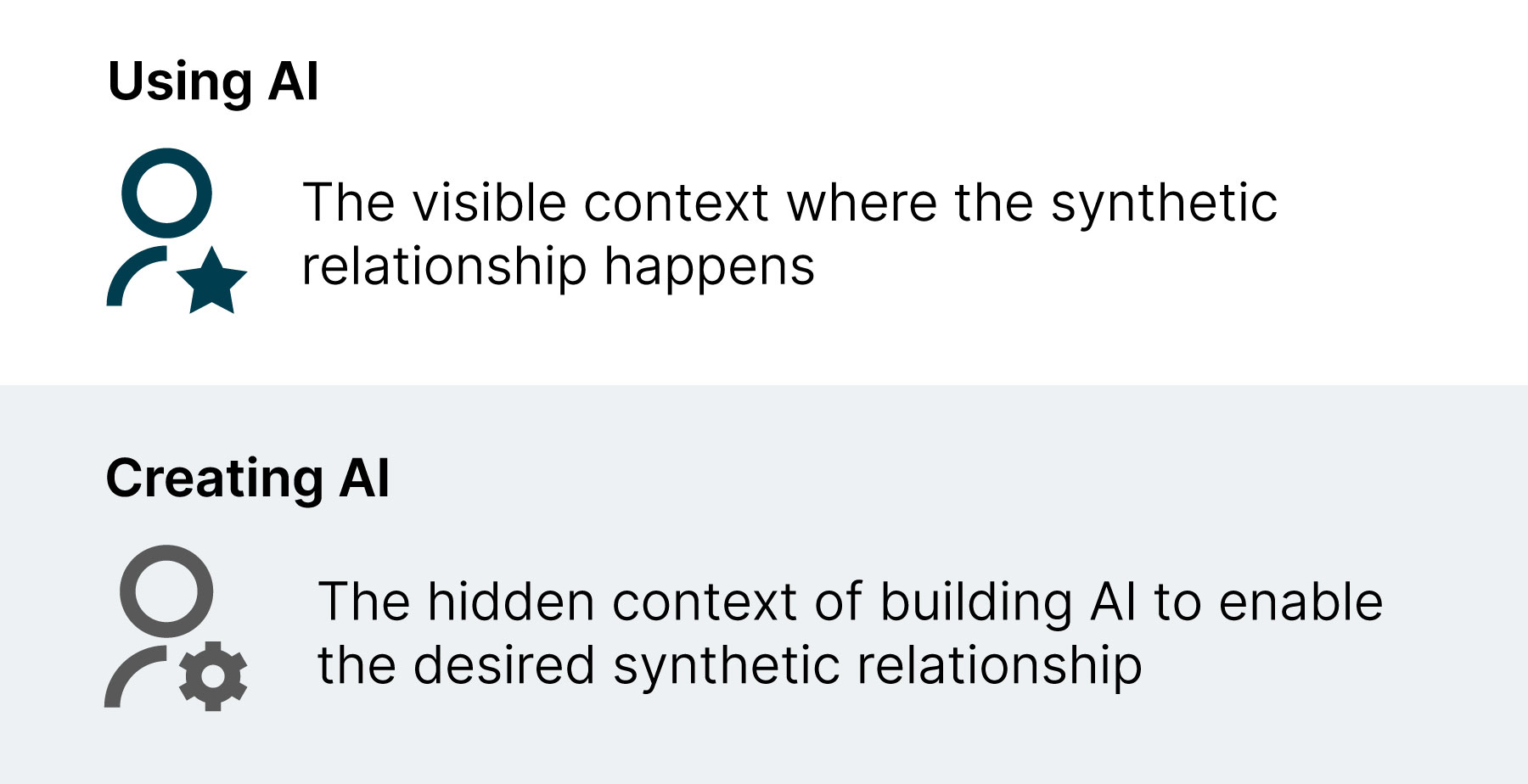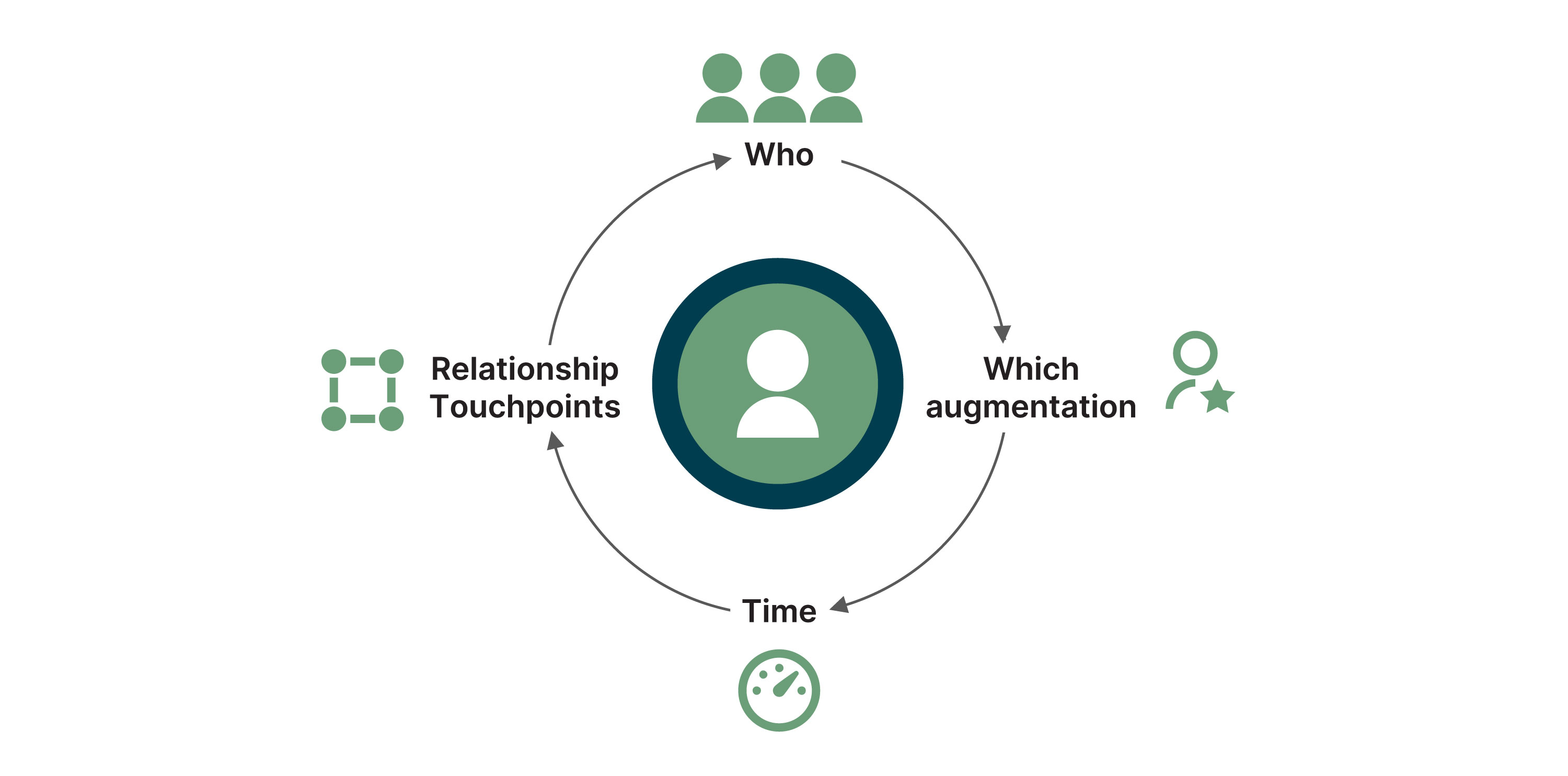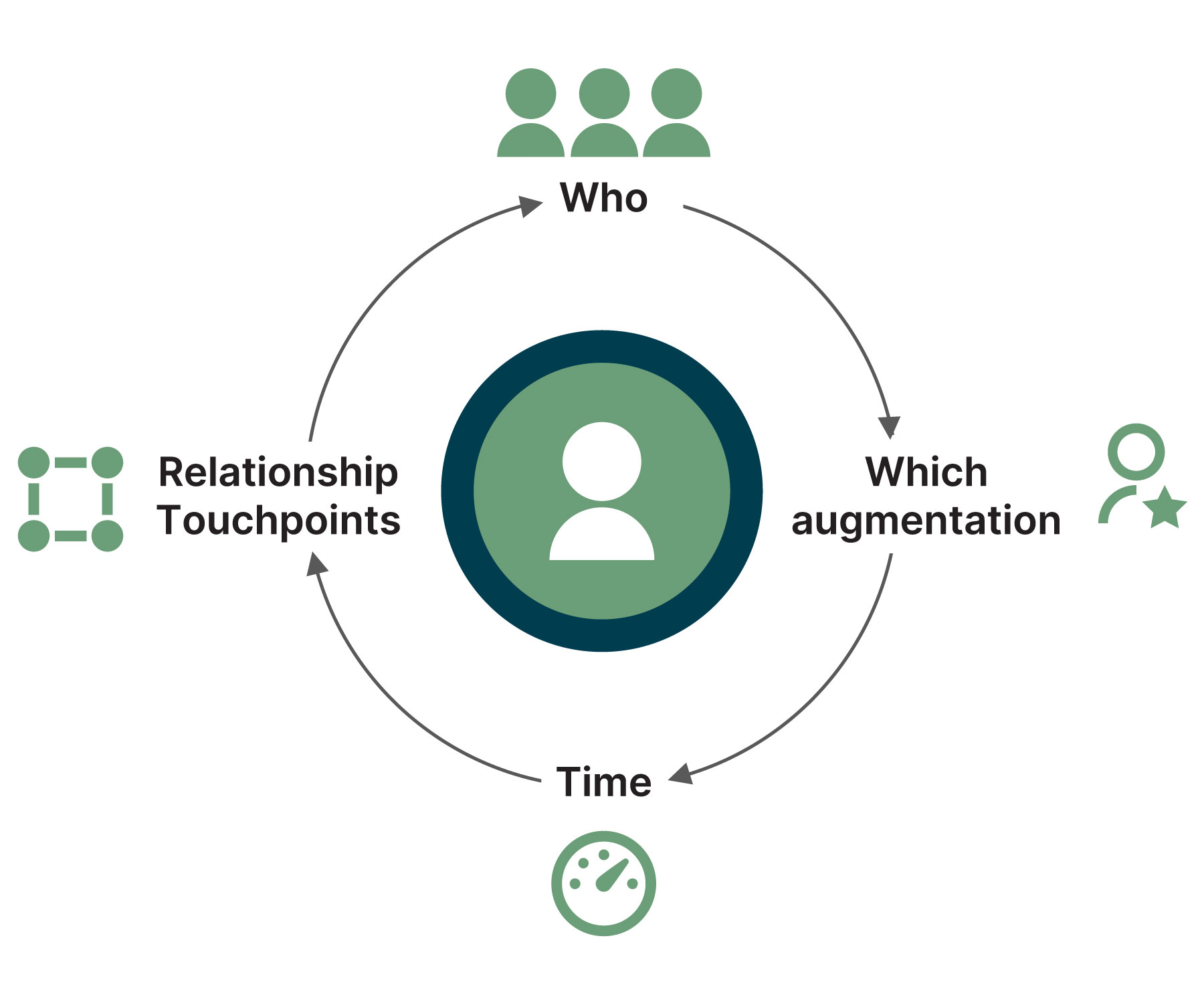AI augmented is already becoming part of our lives. It’s the next step beyond the graphic user interface (GUI). Think about it for a second. You probably use the commands “copy/paste” every day. It is so much a part of your everyday life that you don’t even think about it. This is what will happen as well with AI augmented.
Augmented approaches to AI are already becoming habits for people who have ChatGPT accounts. If you have worked with ChatGPT, you will be familiar with how it feels to interact with the machine in a conversation. You talk to it just like you might talk to a colleague or a friend. This is what some people call a synthetic relationship that goes well beyond the bounds of GUI interaction. Just think about it: when you communicate with ChatGPT or your phone or your computer, how do you feel? Are you friendly or are you impatient?
In this article, we will outline a method for constructing a human relationship focused strategy that can enhance the functionality of AI-based tools.
Automation or augmentation?
Regarding this phenomenon of how we form relationships with technology, we first want to share with you our personal experience which will explain why we argue it is vital to put people first.
We are constantly trying new tools that come on the market. We do this not only for professional strategy and consulting work, but also for creative work for example content production. Today, our digital cameras for example, support settings like the aperture, adjusting focus and stabilizing hand movement, to name a few. However, this is not automation — in fact these abilities are available at a high-level of human control. The same exists for post-production software applications.
We worked in the past years, producing professional digital content, with the goal to establish our own style and brand expression through images. By doing this, post-production is a crucial step in producing a professional result. With these tools, we have seen AI-based features for some time. For example, end-to-end AI-based tools like Skylum and Luminair. By “end-to-end” we mean that the tool takes care of the entire process and therefore limits the degree to which we can control the effects we want to have. The tools are amazing: we can change pictures in seconds. But there is no personal creative workflow. Instead, we simply choose a “pre-canned” effect. And while the workflow is extremely fast and powerful, it leaves us feeling creatively unfulfilled.
After a few tries, we realized we were missing something in the final result. We noticed that even if the final image was great, it was not really “ours”. The result was not quite what we wanted to express.
Don’t get us wrong — AI is really cool — but we find that our relationship to tools tends to gravitate towards AI-based products that put us in control, for example allowing people to decide the saturation or the texture of an image. We call this approach a “synthetic relationship” because it mixes what AI can do with our vision to enable a result that more accurately reflects our own style.
We have a choice
In other words, it is important to recognize that we have a choice on how we use these tools, just like the choices that companies face when building them. This brings us to our second point — a company’s work methods for developing AI-based significantly impact product success. In particular, the question of whether a company chooses to create the conditions for a productive synthetic relationship has significant consequences for users.
Market competition from startups like OpenAI drive existing firms to move beyond their own constraints. Companies face a choice: they can either offer tools that manage the entire workflow or empower individuals through synthetic relationships focused tools. The choice to empower means designing an augmented AI product to enhance human performance can offer users greater control over automation and features.
We believe that the design of this synthetic relationship in AI-enabled tools will critically affect how successful an AI product will be on the market. The design process for building effective synthetic relationships requires close collaboration and a deep understanding of the context that users experience in their day-to-day practice. For a company to understand and incorporate these understandings into their product requires a more interdisciplinary approach that brings technical, business, and customer-oriented professionals together. This team synergy focused on customer value is crucial for success.
It turns out that the design discipline of service design and its toolkit is an excellent pathway to build quality synthetic relationships. Service design emphasizes customer-centricity and often undertakes so-called user journeys to map the activities of the customer. So, why not apply the same concept to developing a future synthetic relationship? This would mean we would create so-called “synthetic journeys”.
In what follows, we will sketch how this practice of building a human synthetic journey might look like.
Building the synthetic relationship map
We conceptualize two dimensions that help us to explore synthetic relationships. First there is the using AI dimension. This is the “visible context” which is right in front of the user and represents those “objects” and “features” the user might interact and build a relationship with. Then there is the building AI dimension, which is the “hidden context” which contains the actual AI development work that supports the visible context and enables the desired synthetic relationship.


This is the first step in taking a relationship-first approach. It means you define your human connection strategy focusing first on the “Using AI” area. We further define the following elements as being essential to deriving a human connection strategy:
- Who represents the human beings you are going to improve;
- Which augmentation refers to the different applications the augmentation can provide (more here);
- Time: define the scope/time frame of the relationship. Are we talking about a relationship of e.g. 10 minutes, 4 hours, 10 days, or 10 years?
- Relationship touchpoints: conceptualized as a series of relevant relationship points, e.g. starting from the first help a customer receives by using the service, to the accomplishment of their desired final result.


A human synthetic journey describes the overall relationship we seek to achieve by letting customers interact with AI and will guide future teams on alignment, scope, and measure of success. A thorough understanding of the AI relationship scope from a human point of view helps to control the inputs and outputs of the AI service. It also helps to identify where transparency and clarity need to be provided to the user and the level of human empowerment you seek to provide.
Bear in mind that what we are doing here relates to a subjective experience that the user will have and it is likely that different users will have variations in their experiences that cannot be predicted and instead must be observed. Therefore, we are not talking about something that is objective in the sense that it cannot be predicted or calculated. Instead, the synthetic relationship we design and develop through AI must be iteratively observed, understood, and refined.
After producing a draft of the human connection strategy, you can then develop the first synthetic relationship map. By being able to “zoom in” and "zoom out” on the relationship touchpoints you can more deeply align on critical requirements for the synthetic relationship you are building both in terms of using AI and building AI dimensions. The synthetic relationship map will also be your single source of truth to align both business and tech.


AI strategy: relationship-first approach
Our view is that such a “human synthetic relationship journey” will be a fundamental tool for designing the strategy of augmented experiences, guiding business and tech decisions. The risks of not prioritizing a relationship-centric vision and strategy for your future AI product include, but are not limited to, the following:
- The widespread popularity of Chat GPT highlights the importance of addressing user needs and expectations. Neglecting this may result in a hard-to-use AI solution, causing user dissatisfaction, reduced adoption, and a decrease in the potential market;
- A lack of focused on the human relationship and ethics may cause unintended consequences like bias, privacy invasion, and discrimination, harming a company's reputation;
- An AI solution that does not cater to the needs of its users may not achieve the desired performance improvements. Users may find workarounds or abandon the AI tool altogether, leading to lower productivity and efficiency gains;
- If the AI solution does not meet user expectations or fails to address ethical concerns, the company may need to invest in significant updates or redesigns. This can result in higher development costs, delayed product launches, and lost competitive advantage
In this brief article, we have sketched out an approach to developing an AI synthetic journey by leveraging a relationship-first approach to help create robust augmentation for AI-based tools.
In a future blog post, we will explore how we might measure outcomes to further refine and evolve such an approach.


















